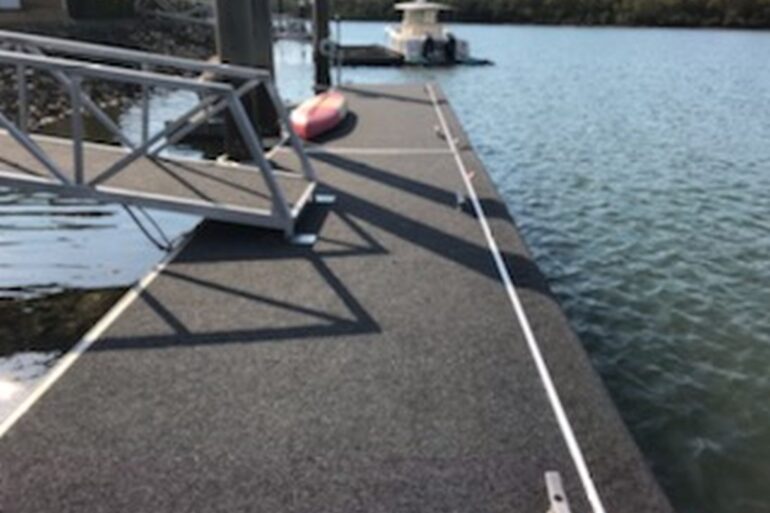
Here, at Micks Marine Maintenance, we specialise in jetty and pontoon maintenance, but these are not the only type of shoreline structures out there. There’s actually quite a few.
You have Breakwaters and Groins as well. Though, these are quite different from jetties and pontoons. Then you also have Seawalls.
Today we take sidestep away from focusing purely on jetties and pontoons to look at the various types of shoreline structures so you can differentiate between them all.
Jetties
A jetty is a narrow, man-made structure that projects from the shoreline into the water. It is fixed in position with piles and is commonly made from timber. Their purpose is to offer docking to boats and vessels. As such, they are used domestically and commercially.
While they fit their purpose well, there are some drawbacks. Because they are made from timber, they are high in maintenance and eventually require frequent repairs.
Due to the high maintenance requirements and costs, pontoons are now the preferred option over jetties.
Pontoons
A pontoon is not unlike a jetty in the respect that their purpose is to offer docking to boats and vessels, and that they too are used domestically and commercially. Some are also fixed into position with piles also. However, what sets them apart is their ability to freely move up and down with the tide and that they are made from aluminium rather than timber. Both these attributes make them more suitable for marine environments. Thus, they require far less maintenance and offer better longevity.
Breakwater
A breakwater is usually a big wall or rocks, which sit above the water’s surface, but they can also sit below the surface. There are various types of breakwaters; a vertical wall breakwater, a heap or mound breakwater and a mound with super structure.
Breakwaters are not like jetties or pontoons at all. Granted they extend out to the ocean, but their purpose is not to dock a vessel. Rather, they are designed to block waves and the surf or to reduce beach erosion.
Groins
A groin is a hard shoreline structure that is perpendicular to the shoreline and usually made from boulders, concrete or wood. There are various types of groins; attracting groins, deflecting groins, and repelling groins.
Their purpose is to provide a permanent solution to beach erosion, making them more similar to a breakwater than a jetty or pontoon.
Seawalls
A seaway is a large barrier built along the shoreline, as part of the shoreline. They are commonly built from reinforced concrete, boulders, steel, and other robust materials. Unlike the other shoreline structures above, they do not penetrate the water in any way.
Their purpose is to protect coastal communities (homes, roads, etc.) against flooding and mitigate the effects of erosion.
Conclusion
While we here at Micks Marine Maintenance specialise in pontoons and jetties, there are other shoreline structures that fit under this categorisation. Such structures include breakwaters, groins, and seawalls.
A jetty is designed to offer docking to boats and vessels, as too is a pontoon. The only difference with a pontoon is that they move up and down with the tide and are made from aluminium, not timber. A breakwater is designed to block waves and the surf or to reduce beach erosion, which is not dissimilar to a groin, which is also designed to prevent beach erosion. However, a groin is perpendicular to the shore and a breakwater parallel to the shore. A Seawall is different again; it runs along the coastline to protect homes, roads and other infrastructure.
Micks Marine Maintenance are jetty and pontoon specialists. If you need a docking solution for your boat or PWC, give us a call.